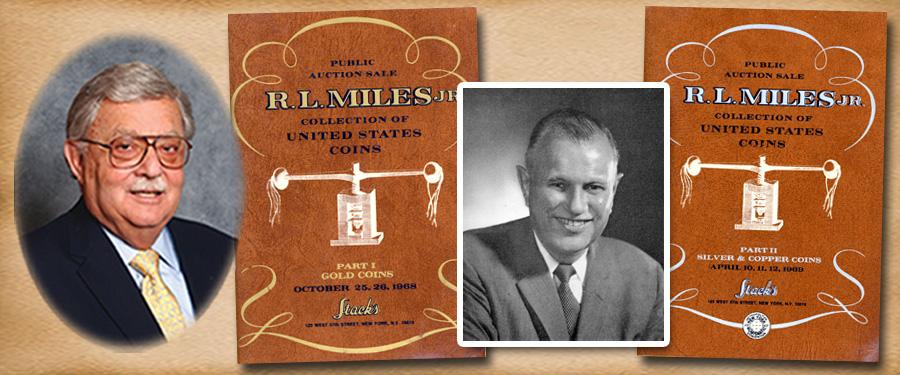
In a tradition started in the mid 1950s by Louis E. Eliasberg, collectors started to lend their collections to various banking institutions for special displays.
It was readily accepted that by hosting these special displays, banks could attract more depositors and clients. In the case of R.L. Miles, Jr., (and shortly later with the John L. Roper Collection), two different banks in the Norfolk, Virginia area established special showrooms in their lobbies for displays. This happened after the banks built new buildings in the refurbished and rebuilt port area of Norfolk, The opening displays were at the Virginia National Bank, a new 21-story bank building, dedicated in 1968. It was erected near the site of the early colony of Norfolk, close to the harbor where some 300 years ago, ships would come to effect commerce in the area.
Two exhibits commemorated the new building’s opening. The first was a great historical item, the Mace of Norfolk, given in 1753 to the governor of Norfolk and the English colony, but not accepted by the City Council until 1754. The Mace was made in of silver, highly ornate and inscribed, and was carried to official functions by the mayor to assert the authority he possessed. The Mace is on display in a special glass case in the lobby of the bank, and is stored in a special underground vault when not on display. The Mace is portrayed on the reverse of the Norfolk commemorative half dollar, struck in honor of the colony, by the U.S. Mint in 1936. It is very large, and surely heavy, and one wonders how it was carried in official functions, when it was used.
The other display, which the bank received on loan from one of its directors R. Lawson Miles, Jr., was an outstanding collection of United States gold, silver and copper coins, rather comprehensive and in outstanding condition. The Stack family was privileged to help build this collection over 40 plus years, and I was fortunate to have been the family member who dealt directly with R.L. Miles, Jr. (known to his friends since early high school days as "Skinny" a nickname I was allowed to use). He had loved collecting coins since his youth when he worked for his father in the oyster business.
How Skinny got started collecting is a very interesting story. The Miles Oyster Company was one of the largest "farmers of Oysters in Chesapeake Bay.” The area they were allowed to harvest was granted to the family in early colonial times and the family maintained the beds through the decades. Skinny’s early job was in the paymaster’s office of the factory. When I visited the company for the first time, it had about 1,000 sinks where the shuckers opened oysters, sorted them and prepared them for shipment all over the East Coast and as far west as Chicago. The oysters had to be refrigerated to keep them fresh and were packed in drums filled with ice, meaning that they could not be shipped by rail past the Mississippi.
To pay the shuckers coins were part of the payroll. Skinny became interested in seeing how many different dates and mints he could assemble, and he filled many collector boards with the coins he found. Though he found many — possibly all — the coins from the Philadelphia Mint, examples from the western mints were much scarcer. He learned that Philadelphia Mint half dollars dated 1914 and 1915 were also hard to find and he started to accumulate those in particular.
The story of this collection will continue in my next few articles.





